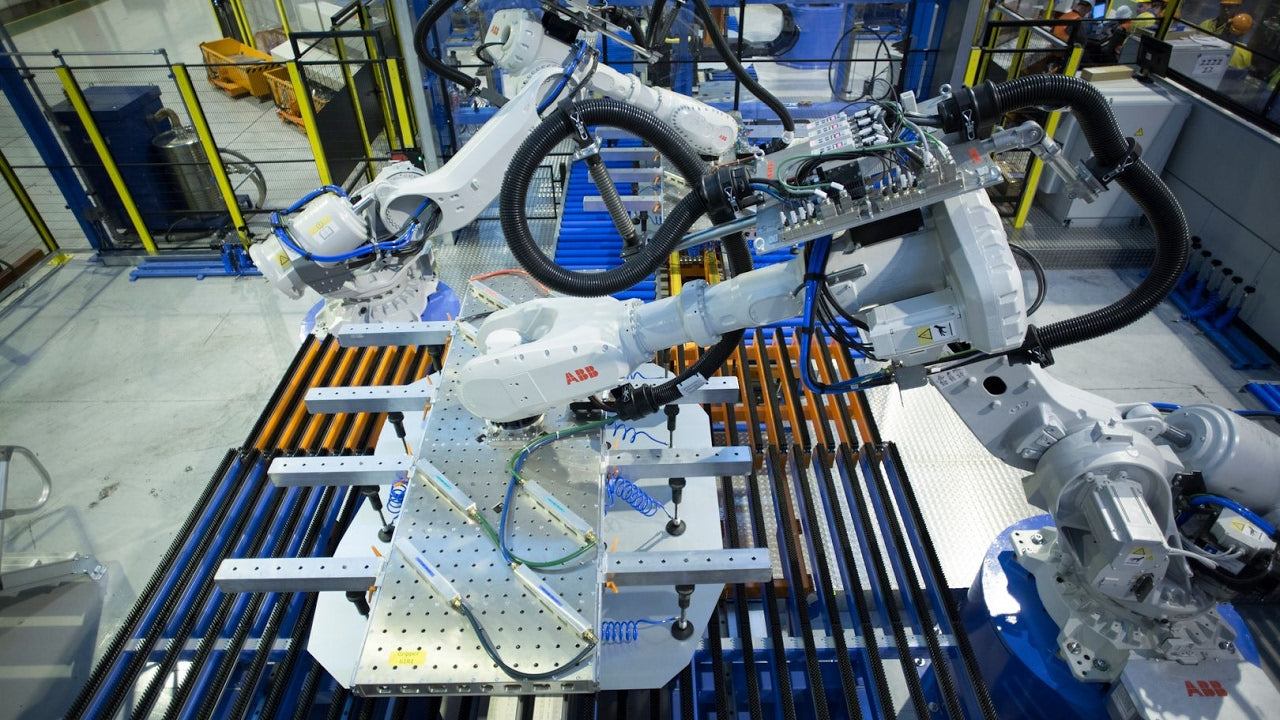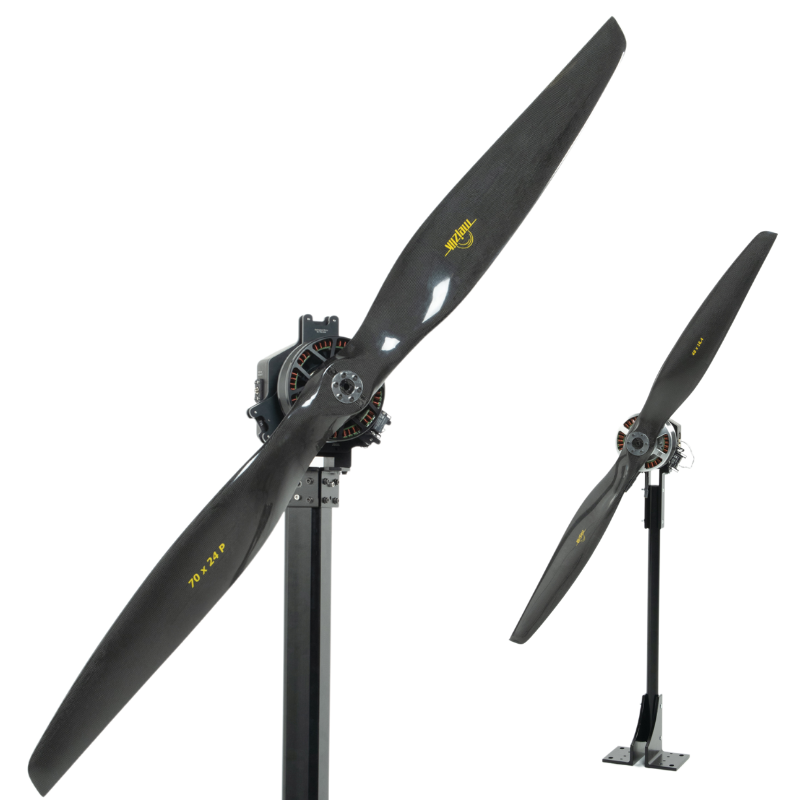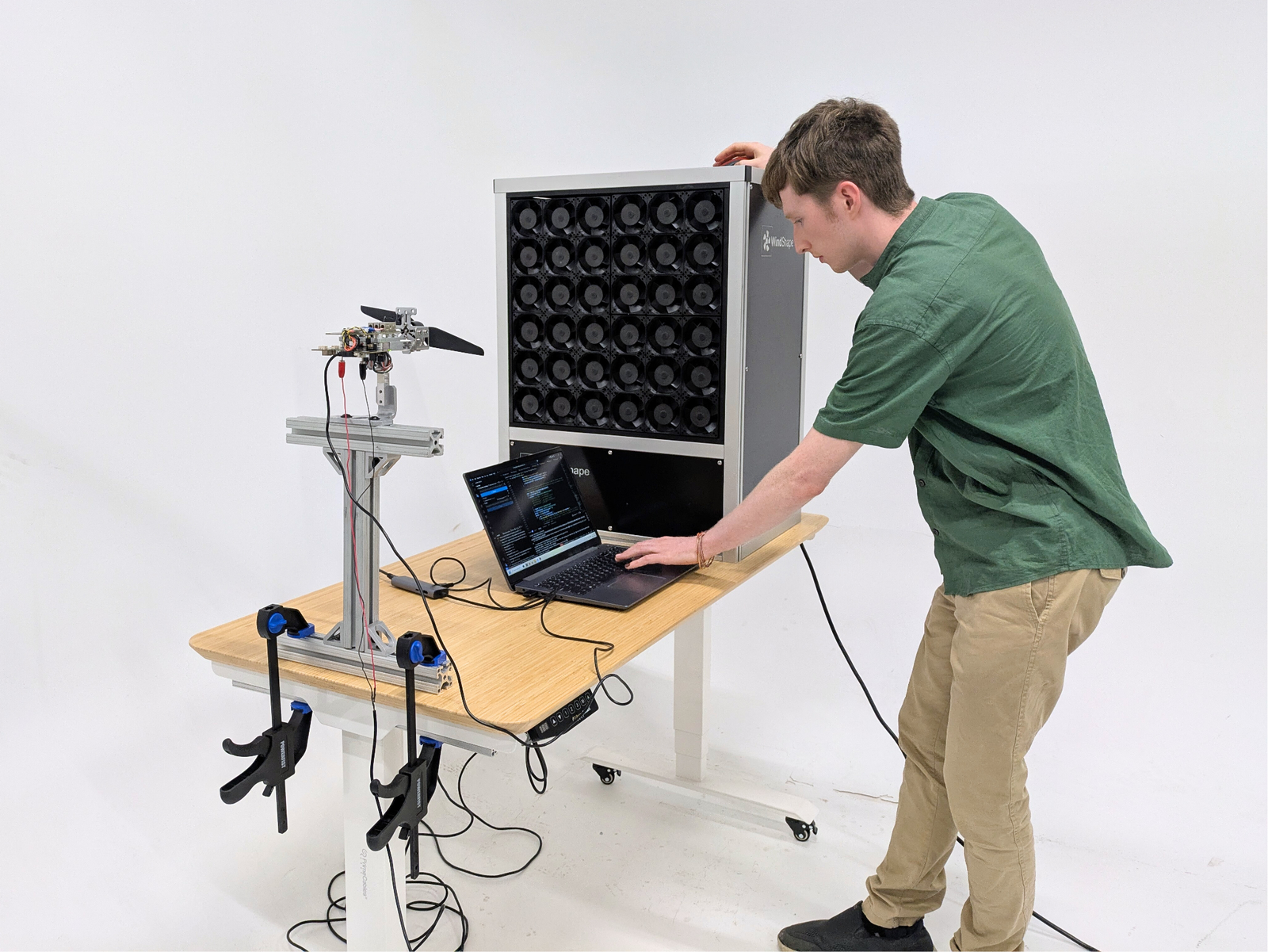By Lauren Nagel
Brushless motors are seemingly everywhere - appliances, vehicles, tools, and more. But what is a brushless motor and what makes it different from a brushed motor?
Brushless motor means the same thing as BLDC motor. The full form of BLDC motor is brushless direct current motor.
In this article we will answer all the basic questions relating to this versatile type of motor.
Table of Contents
- What is a Brushless Motor?
- History of Brushless Motors
- Brushless Motor Mechanism
- Brushless Motor Diagram
- Brushless motor GIF
- Brushed vs. Brushless Motor
- Brushless Motor Advantages
- Brushless DC Motor Applications
- Brushless Motors for Drones
What is a Brushless Motor?
A brushless DC (BLDC) motor is a type of electric motor that relies on repulsive and attractive forces between permanent magnets and electromagnets to drive its rotation. BLDC stands for 'brushless direct current', which roughly describes how the motor works.
The motor’s rotation is managed by a controller that delivers timed bursts of current to the electromagnets in the motor, which in turn controls its speed.
In figure 1, you can see the permanent magnets on the rotor in red and blue and the electromagnetic coils on the stator in copper.

Figure 1: Brushless DC motor diagram
Brushless motors are known for having a high efficiency and long service life compared to alternatives. There are several common ways of describing this type of motor, including brushless motors, brushless DC motors, and BLDC motors.
History of Brushless Motors
Brushless DC motors were invented in 1962 by T.G. Wilson and P.H. Trickey, presented in their AIEE paper titled, “D-c machine with solid state commutation”.
Through the paper they outline the problems they wished to solve and the solutions they came up with. In their section on fundamental considerations, they outline the design challenges they must overcome to build a functional brushless motor:
“Since the required switching of armature conductors is to be done with static elements, it is desirable not to have the switching elements themselves rotate. This may be accomplished by placing the armature winding on the stationary member and causing the field poles to rotate. Use of a permanent magnet for the field element eliminates the need for supplying power of the rotor either through brushes or transformer action [...] the axis of the magnetic field produced by the armature current must also be made to rotate and to do so at exactly the same speed as the rotor. To this end, information concerning the angular position of the rotor poles must be continuously transmitted to the stator so that exactly the right switching of armature conductors can take place”.
In their concluding paragraph, they outline some of the ways they foresee their invention will provide an advantage over brushed motors. The improvements they suggested have turned out to be incredibly accurate:
“It should practically eliminate radio interference in the normal sense as well as wear and maintenance now encountered on brushes and commutators. The machine should have extremely high reliability as well as long life.”
The main counterpart to brushless motors, the brushed motor, was invented over 100 years earlier in 1856. While other advances had been made since then, this major technological overhaul was well overdue.
Brushless Motor Mechanism
The brushless motor relies on two key parts in order to function: 1) The rotor holding permanent magnets, 2) The stator holding copper coils that become electromagnets when a current is sent through them.
Brushless motors may be inrunners, where the stator is located on the outside and the rotor rotates within, or they can be outrunners, where the rotor rotates outside the stator.
For a more detailed explanation of the brushless motor mechanism, check out our article on How Brushless Motors Work.

Figure 2: An inrunner motor (left) and an outrunner motor (right)
When a current is delivered to a coil of the stator, it becomes an electromagnet and develops a North and South pole. When the polarity of the electromagnet matches that of the permanent magnet it faces, their like poles repel and the rotor spins.
If the current maintained this configuration, the rotor would spin briefly then stop once opposite electromagnets and permanent magnets lined up. For that reason, the current is delivered as a three-phase signal in a way that constantly changes the polarity of the electromagnets so the rotor keeps spinning.
The motor spins at a speed equal to the frequency of the three-phase signal, so if you want the motor to go faster, you increase the frequency of the signal. With a remote-controlled vehicle, the speed is increased by increasing the throttle, which tells the controller to increase the switching frequency.
In order to know how and when to energize the coils, the motor uses Hall Effect sensors to determine the relative position of the rotor and the stator. That way, the electromagnets in the stator are activated in the correct order at the right time, and the motor keeps moving.
Brushless Motor Diagram
The brushless motor mechanism is most easily demonstrated with a diagram / GIF, which you can see below.

Figure 3: Brushless motor GIF
Brushless motors may be inrunners or outrunners. The one in the diagram above is an outrunner because its rotor containing the permanent magnets is located outside of the stator. Each permanent magnet is also called a ‘pole’ and the pole count of the motor can affect its performance.
The permanent magnets are repelled by the electromagnets as they line up, pushing the rotor around in a circle while the stator remains stationary, in this case counter-clockwise (figure 3).
The motor controller on the right, also called an electronic speed controller (ESC), is connected to the power source or battery on one side and the motor on the other. It can be connected directly to the throttle input device or remotely such as through a radio signal. The ESC takes the frequency of the throttle signal from the controller and tells the motor how fast to spin by adjusting its switching frequency.
Further reading: How to Control Electric Motor Speed
Brushed vs. Brushless Motor
Brushed motors are another kind of electric motor that relies on the concept of magnetism to drive its rotation.
The main differences between brushed motors and brushless motors are their mechanism, efficiency, and service life. The differences are summarized in this table, then expanded on below.
|
Brushed Motor |
Brushless Motor |
|
|
Commutation |
Mechanical |
Electrical |
|
Efficiency* |
Lower (75-80% typ.) |
Higher (85-92%+ typ.) |
|
Heat |
Higher (20-25% of input power) |
Lower (8-15% of input power) |
|
Initial cost |
Lower |
Higher |
|
Maintenance requirements |
Higher |
Lower |
|
Control of motor speed |
Simple |
More complex |
|
Lifespan |
Lower |
Higher |
|
Electrical noise |
Higher |
Lower |
|
Ignition safety |
Good |
Very good |
|
Low speed control |
Good |
Good |
|
Maximum speed |
~20,000 RPM |
>100,000 RPM |
|
Torque to weight ratio |
Lower |
Higher |
* Any motor running outside of its efficient range of torque and speed will have a low efficiency (<50%) and high heat production.
Commutation: In a brushed motor, the current is transmitted from the commutator to the motor windings through physical contact with the brushes. In a brushless motor, the current is controlled electrically through the switching on and off of the stator coils via semiconductor switches.
Efficiency: Brushless motors provide a higher amount of torque per watt of power drawn than brushed motors, thus making them more efficient.
Initial cost: Brushless motors are generally more expensive than brushed motors of the same size due to the increased complexity of their controllers.
Maintenance requirements: Brushed motors tend to wear down quickly where the commutator meets the brushes, and components thus require more frequent replacement. Brushless motors don’t have any components that experience wear to the same extent, so maintenance / replacement is required less frequently.
Complexity of motor speed control: In a brushed motor, the speed of the motor is simply controlled by the voltage applied to it. In a brushless motor, the motor controller uses a 3-phase signal to control the rotation speed, thus the signal delivery is more complex.
Lifespan: Brushless motors have a longer lifespan compared to brushed motors because they do not experience the same wear and erosion between components. That said, brushed motors can sometimes be rebuilt to extend their service life.
Electrical Noise: In addition to the acoustic noise produced by motors, they can also produce electrical noise that can interfere with other components of the system. Brushed motors tend to produce more electrical noise than brushless motors, which can cause electromagnetic interference with local circuits. Without proper isolation, this interference can cause circuit malfunction and reduced performance.
Ignition safety: Brushless motors are much less likely to produce sparks that could ignite flammable material.
Low speed control: Brushed motors have a simple control system that operates well at low speeds. When combined with angular encoders and control electronics, brushless motors can also rotate at very low speeds. This is ideal for applications such as hoverboards, or high power servo motors. ODrives offers an open source controller for such applications.
Maximum speed: Due to the friction inherent to the brushed motor design, they are not suitable for use at high RPM. The brushes in the motor tend to heat up with increased speed, which leads to increased wear and a high temperature situation. Brushless motors, on the other hand, do not encounter this problem due to lack of brushes, so can be run at very high RPM.
Torque to weight ratio: While brushed motors can produce significant amounts of torque, especially at low speeds, brushless motors that produce a comparable amount of torque are significantly smaller, thus giving them an advantage in their torque : weight ratio.
Brushless Motor Advantages
The previous section discusses the important differences between brushed and brushless motors, but the question remains, are brushless motors inherently better?
As with many engineering questions, the decision comes down to how you plan to use the motor. We know that brushed motors aren’t ideal for high RPM applications, so brushless motors would prevail in those areas. The lower efficiency and high maintenance cost of brushed motors also makes them less desirable for certain uses.
That said, brushed motors have a lower up-front cost, simple speed control, and produce smooth, high-torque motion at low speeds. They also have a linear torque-speed relationship, which makes controlling them easier. Even though they wear out over time, those other characteristics make them the ideal choice for certain devices such as low-speed industrial equipment, blenders, windshield wipers, and mobile medical equipment.

Figure 4: Brushed motors in windshield wipers
On the other hand, brushless motors tend to shine in areas where high RPM is required, such as saws, fans, and propellers. They also have an advantage in their torque : weight ratio, which is important for use in certain vehicles such as drones and electric aircraft as well as in areas where a small but powerful motor is required, such as microrobotics.
BLDC motors are also favourable for applications where high usage is expected and high efficiency is required, such as cordless tools, RC vehicles, heating and cooling systems, and industrial engineering. One example is in Light Detection and Ranging (LiDAR) systems, which are used in robotic navigation and localization systems, such as self-driving cars and surveillance drones.

Figure 5: The RPLiDAR System used for robotic navigation applications
Brushless DC Motor Applications
Let’s dive a bit deeper into some of the applications for brushless motors.
Industrial engineering: Brushless motors are useful for many industrial engineering processes due to their high torque and longevity. You may see them used in CNC machines, linear motors and servomotors. They are also used as actuators to control movements in industrial robots for tasks such as painting, product assembly, and even welding, such as in Tata Steel's UK facility (figure 6).

At home: Due to their low weight and high efficiency, brushless motors are a top choice for many home appliances. They are found in virtually every room of the house in machines such as vacuum cleaners, coffee machines, hair dryers, hard drives, printers, and more. Since many of these devices are produced in very high quantities, it is important for them to be of high quality and reliability to avoid dealing with customer returns and maintenance.
Cordless power tools: Since brushless motors can run on rechargeable batteries, they are ideal for cordless applications requiring minimal weight and high RPM. Cordless drills became available about a decade ago but now represent up to 50% of models available. This is one area where brushless motors must still compete with brushed motors, so price and frequency of use are key factors when deciding which model to go with.
RC Cars: Brushless motors can spin at very high RPM and deliver bursts of speed rapidly, so they are great for use in RC vehicles. The characteristics of the RC motor, such as motor Kv, size, and power rating, will vary based on the model. RC cars may also have nitro motors, which provide a longer run time, but come with the complications of buying gas and refueling the vehicle. Brushless motors tend to have an acceleration advantage over nitro motors, so they are generally better for racing.

Figure 7: Off-road Monster Truck RC Car powered by a brushless motor
Brushless Motors for Drones
The combined characteristics of brushless motors make them ideal for use in drones. They are lightweight, highly efficient, have a wide speed range and high torque capabilities, all qualities that are beneficial for UAVs.
Brushless motors for hobby drones are relatively inexpensive, which allows drone builders to test out different models to determine which ones are most efficient. Maintenance is rarely required due to their high reliability, and it is often less expensive to replace the motor than repair it.
For larger commercial drones and manned drones, larger brushless motors are being developed all the time to meet the demands for greater power, torque and thrust. These motors are contributing to the electric revolution seen in the transportation industry, which includes electrifying existing plane models and conceiving new eVTOL aircraft.
There are many types of drones ranging in size, style, power source, and function. Brushless motors are suitable for many applications, though gas-powered and hybrid motors are also used.
For more information on how to choose a brushless motor for your drone, check out our free eBook on Drone Building and Optimization.
Conclusion
Brushless motors can be found in almost every area of our lives and they are only gaining in popularity. From the home to industrial settings, these motors impress us with their compactness, efficiency and reliability.
To understand these fascinating machines requires a bit of background on electromagnetism and electrical engineering, concepts we’ve covered here.
If you have any remaining questions, don’t hesitate to leave us a comment below, or check out theother articles in our knowledge centre.


 Back to Blog
Back to Blog


Lauren Nagel
October 28, 2024
Hi Peter,
Thank you for your question. We at Tyto Robotics don’t manufacture brushless motors, we manufacture thrust stands with which to test them.
One of the manufacturers on this list might be able to help you with your request: https://www.tytorobotics.com/blogs/articles/brushless-motor-manufacturers-for-evtol-and-aviation
- Lauren at Tyto Robotics